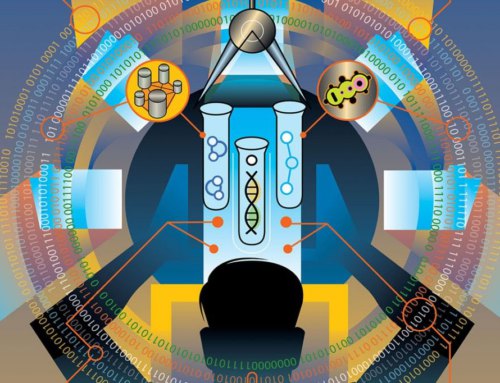From connected cars with crash prevention sensors to internet-connected appliances in our homes, smart technology is increasingly becoming a part of our lives and changing how we interact with the world on a day-to-day basis. But as much as smart technology has begun to integrate itself into 21st-century society, we find ourselves only at the infancy of this revolutionary innovation.
Because smart technology is still new, it sometimes fails to work the way we want it to, resulting in frustration. This is partially because a good amount of current smart technology relies on the same binary programming that runs computers. Although that programming has gotten better and more sophisticated with time, computer or smartphone users of any make and model may still experience periodic freezes or app crashes.
However, new kinds of programming in smart technology are being implemented to reduce these crashes, and, thereby, user frustration. Like the smart technology they’re intended to run, these programs themselves are smart because they are able to adapt and learn the longer that they are used. Powered by a principle called deep learning, these programs offer unique new opportunities for streamlined experiences with tech.
Deep learning is a kind of artificial intelligence that is modeled on the structure of the human brain. Although computers are able to use binary code and algorithms to perform complex calculations at many times the speed of the human brain, one missing rule in the chain of code can crash the entire system. The human brain, on the other hand, is able to bypass missing links to form new connections. This is because our brains are loaded with the power of perception, an almost instantaneous ability to identify people and objects without having to search for a preprogrammed rule that helps us make the identification. Deep learning aims to harness this power of perception and imbue it to technology.
Like the name implies, machines powered by deep learning learn over time, thereby improving user experiences the more users interact with them. This is accomplished through the use of a digital neural network that is trained to recognize inputs from new data.
Deep learning has already decreased frustration with Google’s voice recognition and voice search software. Errors in voice searches decreased by 25 percent overnight after Google deployed deep learning in its Android search function. Alexa, Amazon’s digital assistant found on its Echo brand of products, also functions through a mixture of deep learning and binary programming. Therefore, user experiences become better as Alexa adapts to the user and Amazon introduces improved functionality. Deep learning is also paving the way for implementing real-time language translation programs with minimal error rates, something that will change the way we interact with one another on a global scale.
But innovations beyond deep learning hint at an even more streamlined user experience with technology in the not too distant future. Pepper, a robot developed by Softbank, is the first of its kind to be able to read and remember human emotions. Capable of interpreting smiles, frowns, tone of voice, and even body language, Pepper is the next generation of artificial intelligence that promises a host of smart tech that will uniquely adapt to each individual user, thereby streamlining their experience and reducing frustration.
In the years ahead, AI-enabled technology has the potential to make UI/UX design implementation easier on large-scale projects and could also optimize machine-delivered communications in customer service situations. However, the realization of these ideas will hinge on improving this technology’s ability to realistically emulate and appeal to human emotions. Although deploying AI as a solution to user frustration is a promising concept, we still have a ways to go before we, the user, can expect to receive personalized, human-like assistance from bots. But, who knows? Humans, we know, can’t predict the future.




Leave A Comment